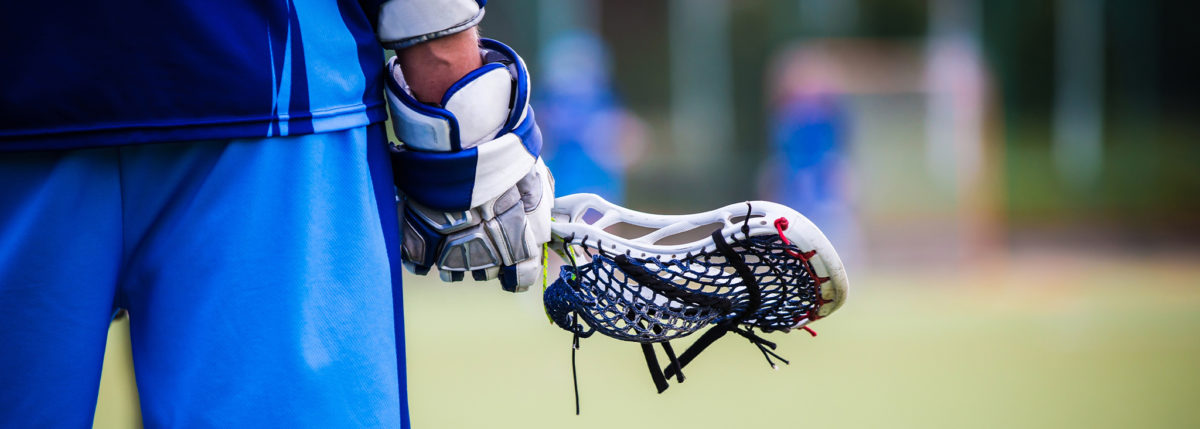Playing College Lacrosse with T1D
When I was just 12-months-old, before I had the ability to understand the impact it would have on my life, I was diagnosed with type 1 diabetes.
My diagnosis was unexpected, although when are they not? After weeks of constantly vomiting and begging for more juice, my mother was growing increasingly concerned. She had multiple doctors tell her I was simply ill with a stomach virus, and that some ginger ale and rest would help me heal. Little did anyone realize that all of that sugar was a death march—I ended up losing 25 percent of my body fat in just two days.
Finally, my mother rushed me to the emergency room after my health showed no signs of improvement. It took over an hour of poking and prodding my veins to try and draw blood because of how dehydrated I was, a common sign of diabetic ketoacidosis (DKA). Finally, the head doctor came in and said, “Mrs. Castellano, your son’s blood sugar is 1,200. He needs to be admitted immediately. I can’t guarantee the outcome of this because your son is very sick.”
By some miracle, I survived, and I left the hospital as a 12-month-old with type 1 diabetes, eight days later. At first, it was a roller coaster for my parents. Since my mother had a nutrition background, she understood monitoring carbs, and learned how to manage my insulin. I quickly gained my weight back. As a natural-born athlete, my parents signed me up for football, lacrosse, baseball, soccer and basketball as I grew up.
At 10 years old, I was hit with another roadblock. My growth began to stall, and my blood sugars were fluctuating wildly for no reason. At first, my parents and doctors thought it was from genetics and malabsorption. They were right, but it wasn’t just because of my diabetes.
After undergoing multiple tests, I was diagnosed with celiac disease at the age of 12. Celiac disease is a condition where the small intestine is hypersensitive to the protein gluten, which leads to chronic failure to digest food if gluten is consumed. It took so long to find this out because I had none of the classic symptoms of celiac disease.
I was now a 12-year-old boy with two chronic autoimmune diseases.
Yet again, my mother’s nutritionist insight proved invaluable. She worked around the clock to ensure I had healthy and tasty foods to eat. Even though I rebounded, my sustained bouts of malnutrition because of my chronic autoimmune diseases have permanently stunted my growth.
I’ve always had a passion for sports. Fortunately, while my diseases have affected my physical size, they have only spurred my emotional and mental growth. In 2010, I entered St. Anthony’s High School in South Huntington, NY—one of the nation’s powerhouse programs for high school lacrosse. I was set on proving that I was good enough to play college lacrosse, and I succeeded; I ended up defying the odds, and ultimately received multiple offers to play D3 NCAA Lacrosse.
At the end of high school, I decided to commit to SUNY Cortland to play lacrosse, but I realized eight months later that I made a huge mistake. Stevens Institute of Technology, another university I had looked at, was where I belonged the following fall. It was already February of my senior year of high school, but I spent the next week working my butt off to prove to the Stevens’ Admissions Office that I would be an asset to the university. I successfully convinced them, and Stevens took me on as a freshman the following fall.
Through all of my roadblocks and surprises, I continue to forge ahead with a positive attitude and can-do spirit. I’ve challenged myself plenty, and it has paid off. At Stevens, I played two years of Varsity Lacrosse and became treasurer of the Delta Tau Delta Fraternity. I was also selected as one of the portfolio managers of the Stevens Student Managed Investment Fund (A group of Stevens’ most elite students who actively manage $400k of the school’s endowment by investing it in the U.S. stock market). I landed a full-time job offer before my senior year of college began in the job of my dreams at ITG. I created a startup called East Isle Company with my twin brother, Nick. But, most of all, I developed amazing relationships with people who I consider family, and overcame many challenges that made me the man I am today.
As I reflect on my 22 years of life, I’ve realized that I have diabetes, but diabetes doesn’t have me! Every challenge that you face in life is an opportunity to learn and improve. Diabetes has made me stronger, persistent, humble and grateful for all the amazing things in my life. It is important to understand that we only have one shot at life, and we can make a difference. I am driven to inspire others to achieve their dreams, help people reach their highest potential, learn from failures and challenges and to make a positive impact in this world.





